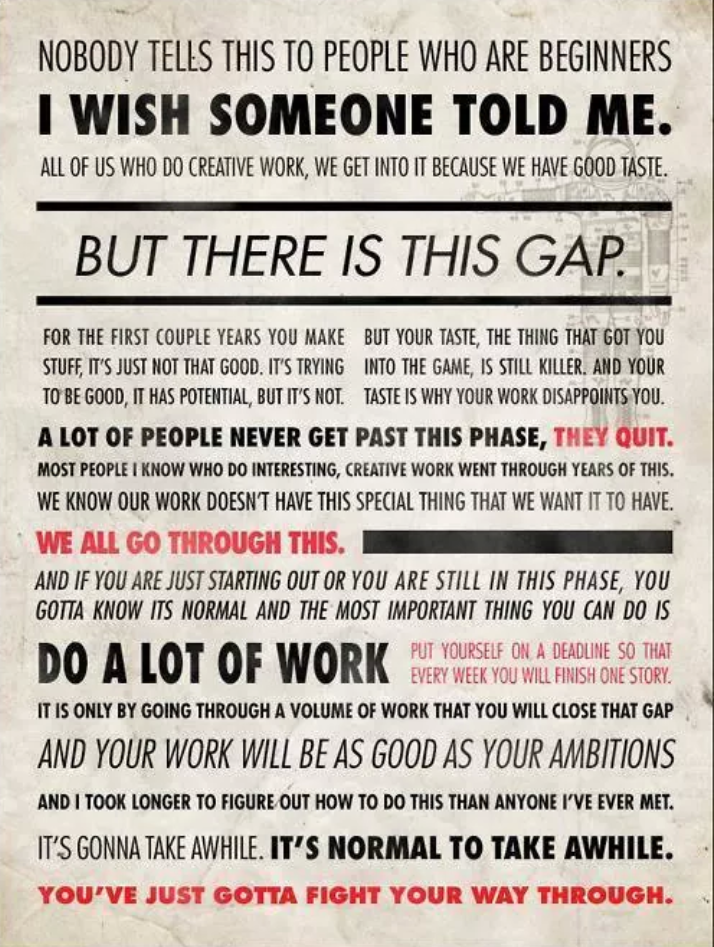Views : 1,119





3Dprinting (184) A.I. (923) animation (354) blender (220) colour (241) commercials (53) composition (154) cool (375) design (660) Featured (94) hardware (319) IOS (109) jokes (141) lighting (300) modeling (160) music (189) photogrammetry (199) photography (757) production (1310) python (108) quotes (501) reference (318) software (1384) trailers (310) ves (577) VR (221)
POPULAR SEARCHES unreal | pipeline | virtual production | free | learn | photoshop | 360 | macro | google | nvidia | resolution | open source | hdri | real-time | photography basics | nuke
Category: quotes
-
The Fermi Paradox – Where Are All The Aliens?
http://www.quora.com/What-are-some-theories-on-why-we-arent-visited-by-aliens-yet
http://listverse.com/2014/09/30/10-reasons-that-we-still-havent-found-aliens/
http://io9.com/11-of-the-weirdest-solutions-to-the-fermi-paradox-456850746
http://skepchick.org/2012/01/where-are-all-the-aliens/
http://praxtime.com/2013/02/03/so-where-are-all-the-aliens/
-
George Carlin on divine interventions
If God has a divine plan for everything. Why pray to change it…
-
Marvin Minsky
“I cannot articulate enough to express my dislike to people who think that understanding spoils your experience… How would they know?”
Marvin Minsky
-
To Be Successful, Do Only What You Do Best
http://www.entrepreneur.com/article/244176
If there were some way for you to download decades of my experience in the business world and sort through the individuals who have had great success bringing real products to market, you’d find something very interesting.
You’d find a lot of very competent, talented, smart, ingenious, driven people who work very hard at their jobs. And the one thing they care about most is helping to deliver groundbreaking products and services that customers prefer over the competition. One more thing they’d all have in common: a specific area of functional expertise. Whether it’s product development, operations, marketing, finance, or an entire market, there is always one thing they do best. The same is true of nearly every successful entrepreneur you’ve ever heard of:
-
SO YOU THINK HAVE A GREAT IDEA by Nick Rowney
http://nickrowney.com/so-you-think-have-a-great-idea/#more-%27
You’re not alone in fact everyone I have ever met has at least one burning in the back of their brain. You see the Great Idea is one thing that we humans cling to in our misguided belief that we are special.
Of course we are not special when it comes to ideas as, just as you are having your epiffany someone on the other side of the world had that thought ten years ago, and you know what makes it worse theirs was better.
Oh sure we struggle with the fact and look for weaknesses with their idea kidding ourselves that our way is better….but is it.
-
RIP Leonard Nimoy
http://www.esquire.com/entertainment/tv/a33392/leonard-nimoy-what-ive-learned/?spr_id=1456_152373401
Best piece of advice I ever got was from John F Kennedy when I was driving a taxi in and out of the Hotel Bel-Air. He was a senator then. I was just out of the army and I needed to make some money, so I got to talking about the difficulty of making a living as an actor. And he said, “Just keep in mind, there’s always room for one more good one.”
-
Lemon juice and the Dunning-Kruger effect – Incompetent people fail to see the magnitude of their incompetence
http://petapixel.com/2014/10/13/dunning-kruger-peak-photography/
The name of the peak refers to the Dunning–Kruger effect, coined by a pair of researchers at Cornell University in 1999.
Through their study, the scientists discovered that people who are unskilled at something — photography for example — are often unable to see how bad they are. Incompetent people will (1) fail to recognize that they are bad, (2) fail to recognize how good competent people are, and (3) fail to see the magnitude of their incompetence.
However, if given more training in what they’re bad at, those same people will recognize how incompetent they were (this is where people fall from the “Dunning-Kruger Peak”).
(more…) -
The Trolly Problem – kill 1 or 4
http://people.howstuffworks.com/trolley-problem.htm
A run-away trolly is traveling down some tracks.
At the end of the tracks there are 5 people tied up. You are standing next to a switch. If you push the switch, the trolly will be moved to a different set of tracks where there is only 1 person tied up.
The only two outcomes are either you do nothing and 5 people die, or you push the switch and 1 person dies. Which one is the morally correct choice?
One common answer is the utilitarian viewpoint: the greatest good for the greatest number of people is what matters. With this thinking, you should take action and save 4 people’s lives by switching the track. An alternate viewpoint suggest that because the run away trolly was already in place (not at the fault of your own), if you push the switch you will be directly hurting another person (the 1 person). But if you do nothing you are not at fault for any moral wrongs. So with this logic you would do nothing.
-
The Monty Hall problem –
Suppose you’re on a game show, and you’re given the choice of three doors: Behind one door is a car; behind the others, goats. You pick a door, say No. 1, and the host, who knows what’s behind the doors, opens another door, say No. 3, which has a goat.
He then says to you, “Do you want to pick door No. 2?” Is it to your advantage to switch your choice?
A lot of people would say that the choice to switch or stay does not matter.
You should always switch!
-
The Secretary Problem and the n/e stopping rule
The basic form of the problem is the following:
imagine an administrator willing to hire the best secretary out of n rankable applicants for a position. The applicants are interviewed one by one in random order. A decision about each particular applicant is to be made immediately after the interview. Once rejected, an applicant cannot be recalled. During the interview, the administrator can rank the applicant among all applicants interviewed so far, but is unaware of the quality of yet unseen applicants.
The question is about the optimal strategy (stopping rule) to maximize the probability of selecting the best applicant.
If the decision can be deferred to the end, this can be solved by the simple maximum selection algorithm of tracking the running maximum (and who achieved it), and selecting the overall maximum at the end. The difficulty is that the decision must be made immediately
The problem has an elegant solution.
The optimal stopping rule prescribes always rejecting the first applicants after the interview (where e is the base of the natural logarithm) and then stopping at the first applicant who is better than every applicant interviewed so far (or continuing to the last applicant if this never occurs).






